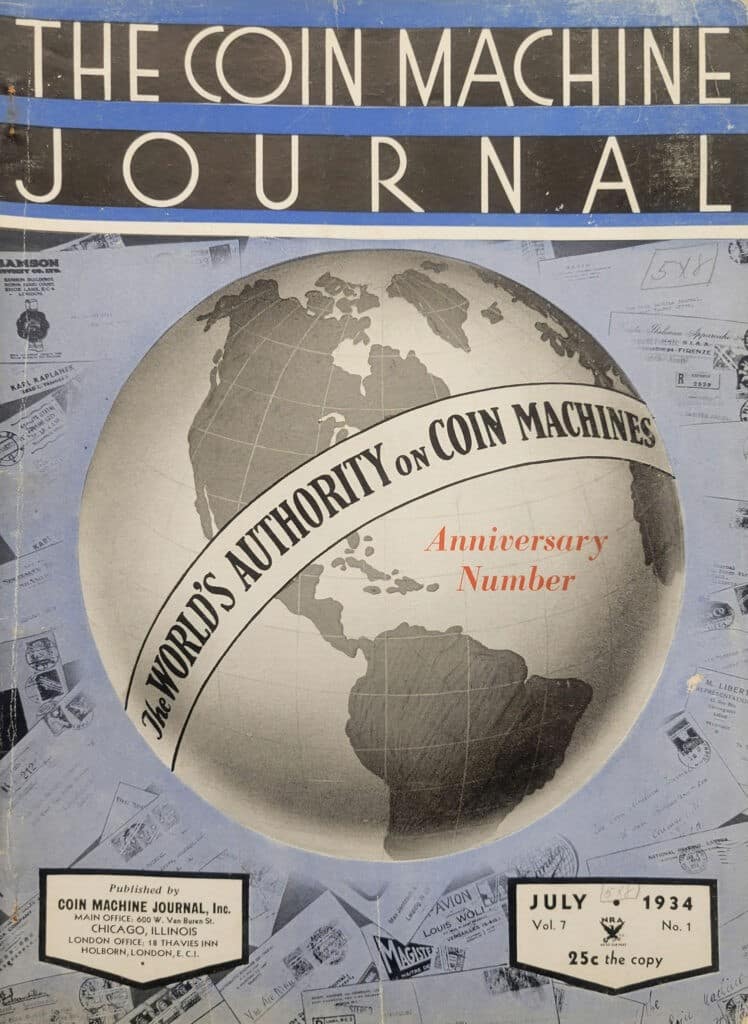
When The Strong created the International Center for the History of electronic Games (ICHEG) in 2009, we recognized the important role that coin-operated games played in the evolution of video games. Indeed, the first commercial video game, Nutting Associates’ Computer Space(1971), and the first hit video game, Atari’s Pong (1972), arrived in coin-operated arcade cabinets. The Strong acquired these significant titles as part of a collection of more than 100 arcade games in 2009. More than a decade later, this initial group of games has grown into an exceptional public collection of coin-operated games and related historical materials, including published sources such as magazines, newsletters, and catalogs and unpublished documentation from key game developers and companies. Together, they document more than a century of the coin-operated game industry.

The Strong’s growing collection of more than 350 coin-operated games includes popular and rare titles from early 20th-century mechanical and electromechanical amusements to the latest 21st-century video and redemption games. Some of the museum’s earliest examples of coin-operated play include Mills Perfect Muscle developer (1904) and Exhibit Supply Co.’s Tiger Pull (1928) strength testers; Peo’s Little Whirl-Wind (1930), one of the best-selling countertop games of the 1930s; and Gottlieb’s Baffle Ball (1931), the game that helped launch the pinball industry. Mid-century titles include International Mutoscope’s Sky Fighter (1940) artillery game; Gottlieb’s Humpty Dumpty (1947) pinball, the game that introduced electromechanical flippers; and Genco’s Horoscope Grandma Fortune Teller (1957). The collection also features dozens of modern pinball, redemption, and video games. Highlights from the 1970s and 1980s include Nutting’s Computer Space Ball (1972), the first Pong clone; Atari’s Gran Trak 10 (1974), the earliest coin-op racing video game; Midway’s Gun Fight (1975), the first arcade video game to use a microprocessor; Exidy’s Death Race (1976), which sparked controversy over its hit-and-run-style game play; Taito’s Space Invaders (1978), the alien shooter that catapulted video games into mainstream culture; a prototype of Atari’s Asteroids (1979), the company’s all-time best-seller; Atari’s Centipede (1980), the first arcade video game co-designed by a woman, Dona Bailey; Stern Electronics’ [Muhammed] Ali pinball (1980), one of the first arcade games to celebrate a Black cultural icon; Namco’s Pac-Man (1980), which helped make video games a mass cultural phenomenon; and Nintendo’s Donkey Kong (1981), the platformer that introduced the Mario (then known as Jumpman) character. Examples of significant games from 1990s through today include Midway’s Addams Family (1991) pinball, the best-selling modern pinball machine; Midway’s Mortal Kombat (1992), the fighting game that helped spark a moral panic over video game violence; Coastal’s Temple Run (2012), an adaptation of the popular mobile game; Raw Thrills’ Space Invaders Frenzy (2017), a feverish update to the classic alien blaster; Raw Thrills’ Halo: Fireteam Raven (2018) massive four-player shooter; and Adrenaline’s Hot Wheels: King of the Road (2020) six-player redemption driving game. Many of these, and other examples, provide our museum guests and visiting researchers with opportunities to experience for themselves the sights, sounds, and feel of original arcade games.

In addition to a broad assemblage of coin-operated games, we also collect and preserve books, magazines, newsletters, catalogs, and other published materials. Trade magazines such as Automatic Age, Automatic World, and Coin Machine Journal provide us with a window into the coin-op industry from the 1920s through the early 1960s. Nearly complete runs of RePlay and Play Meter magazines are vital sources for understanding how the industry evolved since the middle 1970s. These and other published materials tell us what games companies manufactured and marketed, as well as how operators, journalists, and players received them. Magazines also provide us with a view of the coin-op business as a whole and the trends, ideas, anxieties, successes, and conversations that animated the industry.
The Strong also cares for an unparalleled collection of personal papers and corporate records related to coin-operated games. The Larry Bieza Coin-Op and Amusement History Collection includes fliers, photographs, brochures, catalogs, and correspondence related to early and middle 20th-century coin-op manufacturers such as Dale Engineering, Exhibit Supply Co., and H.C. Evans & Co. (among others). Collections from coin-op giants Williams, Bally, and Midway feature original pinball playfield design sketches as well as bills of material, memos, and design and engineering documentation related to hundreds games. Corporate records, design, engineering, and marketing materials from Atari demonstrate the company’s pioneering efforts to create and sell some of the first coin-op video games. Collections of personal papers from Carol Kantor, the video game industry’s first market researcher, and the late Amelia “Millie” McCarthy, the former president of the New York State Coin Machine Association, document some of the important contributions of women to the industry. Additional personal papers and materials from Innovative Concepts in Entertainment co-founder Ralph Coppola, Williams Bally/Midway executive Ken Fedesna, and game developers Larry DeMar, Sam Dicker, Steve Kordek, and others all contribute to a singular collection of coin-op game-related documentation.

The museum’s permanent and temporary exhibits feature some of these games and materials on display, while all are made available to researchers from around the world. Game history researchers and scholars have already used many of these resources to produce several popular and foundational books, including Raiford Guins’ Game After: Cultural Study of Video Game Afterlife (2014)and Atari Design: Impressions on Coin-Operated Game Machines (2020), Carly Kocurek’s Coin-Operated Americans: Rebooting Boyhood at the Video Game Arcade (2015), Tim Lapetino’s Art of Atari (2016), and Anne Ladyem McDivitt’s Hot Tubs and Pac-Man: Gender and the Early Video Game Industry in the United States (2020). I look forward to seeing how future researchers will use this treasure trove of games and documentation.
To learn more, access The Strong’s collections, or make a donation, please check out our Collections webpage.
 Hours 10 a.m.–5 p.m. | Fri. & Sat. till 8 p.m.
Hours 10 a.m.–5 p.m. | Fri. & Sat. till 8 p.m.